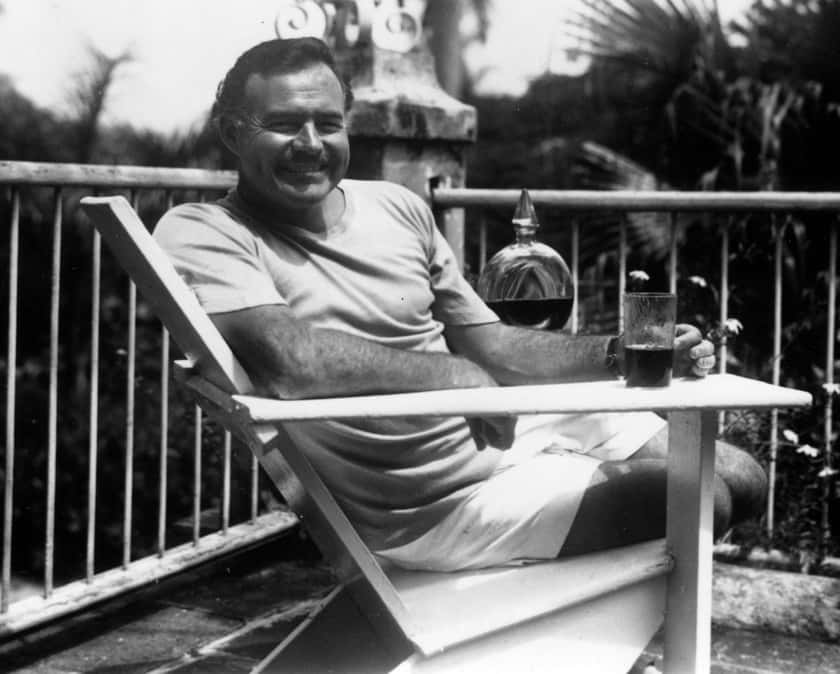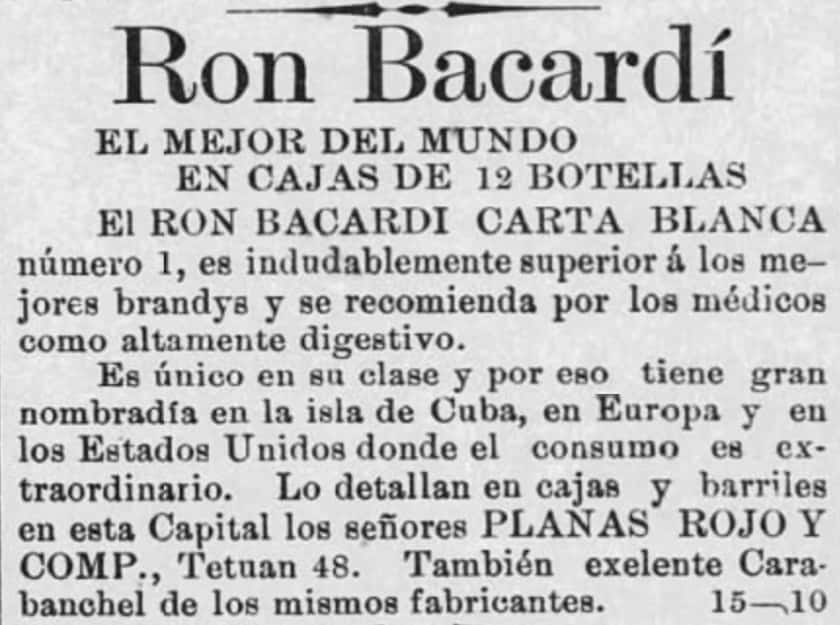During the heat of the summer, there's nothing like having an ice-cold drink in one's hand to sip and slurp while at the beach or walking on an 85-degree day through the city streets–even better if it's spiked with a generous amount of rum.
(That’s 30 degrees Celsius for our friends to the North or across the Atlantic)
The Daiquiri is one such drink that never fails to satisfy due to its icy temperature, mildly sweet and sour flavor, and versatility. The rich almond and vanilla notes in the traditional spirit of Bacardi Carta Blanca rum shine through amidst the complementary lime and sugar.
It's the drink that's been said to be the foundation of all tiki drinks and with its classic simplicity, it gave rise to so many forms that it would be impossible not to find one to your liking.
Everyone from Ernest Hemingway to John F. Kennedy customized this tropical tincture. Now, it’s your turn.
The only requirement is that it has to have a spirit, some citrus, and a sweetener. Finally, it should be served as cold as you can get it. It's no wonder this satisfyingly frigid drink has its origins in steamy Havana.
Lorem ipsum is simply dummy text of the printing typesetting industry. Lorem Ipsum been industry's standard dummy text.
In 1898, American miners toiled in the Havana heat in search of iron ore in the village of Daiquiri. The men were part of the first engineering expedition to the exotic island, which held the promise of a boost to America's steel industry.
This quest to Cuba took place right after Theodore Roosevelt's victory at The Battle of San Juan Hill. With new territory to explore for resources, the government waved some rewards in front of engineers to get them to uproot.
Naturally the men had some nice, cozy jobs in the States. To get them to head deep into yellow-fever territory, they offered high pay, free tobacco, and most importantly, a monthly ration of the local Bacardi Carta Blanca.
The reward for their long days in the field was pretty substantial and it not only allowed for Cuban mines to be exploited, but it also led to a new cocktail that would end up conquering the conqueror.
One day, the leader of the expedition, Jennings Cox, noticed his men were mixing Bacardi in their coffee and decided to experiment with the new liquor on his own time.
As the story goes, he was throwing a party one night with gin being the main drink he served. According to his granddaughter, Cox ran out of gin and was concerned about serving Bacardi straight-up, so he added some lime and sugar.
Necessity, as they say, is the mother of invention. As a result of his dilemma, the simple but sublime cocktail was born.
Basil Woon, the author who penned the recipe in the 1928 book "When it's cocktail time in Cuba," tells a slightly different tale of the cocktail's origins.
He claims the miners in Daiquiri were drinking the special drink at the Venus Bar, when Jennings Cox decided to give it the name–wait for it . . . Daiquiri. How creative!
One way or another, Jennings Cox is well documented as being the official inventor of the fine cocktail, with personal notes of his confirming it.
Soon, the Daiquiri made its way to the United States by way of an Admiral in the Spanish-American War of 1898. But the drink didn't become big in the U.S. overnight.
As it gained popularity in Havana, it earned a place on the menu at El Floridita, a bar that later featured Ernest Hemingway planted in a bar stool on a regular basis. And the Daiquiri became one of the writer's favorite concoctions.
It's hard to talk about many classic cocktails without Hemingway's name popping up at some point. The man was as prolific with drinks as he was with a pen.
He happened to have a real soft spot for Cuba, which helped contribute to American interest in Cuba's drinking culture from the 20s and beyond.
When he first visited El Floridita, he ordered a Daiquiri that was tailored for his health needs. Since he was diabetic, his bartender nixed the sugar, doubled the rum, and used grapefruit, lime, and a touch of maraschino cherry liqueur.
It's an impressively strong mixture for an impressively hardy drinker. As a result, Hemingway was captivated enough with the bar and the surrounding culture that he couldn't keep away.
Hemingway lived in Cuba on and off for thirty years and the country featured prominently in such literary works as To Have and Have Not and Islands in the Stream.

Fidel Castro even lauded Hemingway's work for being centered on human rights. So loved was he in Cuba that he's still remembered at bars and museums in Havana, with cocktails paying tribute to him at various parts of the city.
So, perhaps when we tip our hats to those who brought the drink 60 miles to the U.S. shore, we should do so to Jennings Cox, Basil Woon, and good old Hemingway.
Although Daiquiris can be made with other spirits, it's typified largely by the use of rum, which is a throwback to the original Bacardi from the 1898 mix.
Like the Daiquiri itself, rum wears many hats and its flavor depends on where it's from, how it's aged (if at all), and how it's distilled. Sugarcane is the component all rums have in common and its production fittingly has roots in the Caribbean.
The famous Bacardi Carta Blanca is among the lighter varieties. It's transparent in color, but by no means is it light on taste. With hints of vanilla and lime and an aroma of almond and fruit, this foundational spirit makes for an adventurous experience in any Daiquiri.

Bacardi ad from 1897
But there are many other rums that can be used as well, from the funkier, Jamaican-style rums to the English-style that ranges from light to deep and rich.
Some of the best choices in these categories include Wray and Nephew for Jamaican rum–a highly potent, 126 proof spirit with enough kick to knock you off your feet if you're not careful.
For a more reserved choice, there's El Dorado White Rum–a modest, English-style rum that mixes well in sours, making it ideal for any Daiquiri where you might want fruit or citrus flavors to shine through.
But there are some unique, modern takes on the classic where rum doesn't always have to make an appearance.
If you're ambling the streets of New Orleans you'll figure out pretty quickly that the city has an affinity for frozen Daiquiris. Served from roiling slushie machines, you'll find a rainbow of choices from Strawberry, to White Russian, to Pina Colada.
Although a departure from the original Daiquiri cocktail, the New Orleans Daiquiri is a unique and wildly successful take on the summer refreshment.
Starting in the crazy 80s, businessman David Briggs Jr. launched the first New Orleans Original Daiquiris in Hammond, LA where the dignified Daiquiri of old got an over-the-top makeover, bedazzled in bright color and volume.
And folks, New Orleans sure as hell doesn’t go light on volume.
Going from a delicate coupe glass to a cup of up to 32 oz of alcohol and sugar, neon and excess are what this game is about.
In 1982, they got a car party started with reckless abandon when they opened The Daiquiri Factory–a drive-thru service that doled out 20 oz, high-proof slushies to drivers aged 18 and up. What could go wrong?
Well, the Big Easy is nothing if not laissez faire.
The new business prompted a Daiquiri frenzy at the locale that could only be managed by a deputy and a fastidious ID checker. And to this day, the product is a premium seller on the streets of Bourbon and Decatur.
But if you find yourself hankering for something in-between the slushie and the Cox original, you're certainly in luck. The moods of this cocktail are truly endless.
The sheer number of variations is nothing short of overwhelming to any drinker. To keep things in order, the bartender at El Floridita, Constantino Ribalaigua Vert, gave his Daiquiris numerical order, with the classic being Daiquiri #1.
The versatility of the drink should embolden you to walk up to the bar and follow your instincts on how you want to experiment with the core ingredients. But if you'd rather stick to tried and true, or you want a starting point for later experimentation, here are some of the most popular balances:
Invented in 1915 by Constantino at El Floridita, the #2 includes Bacardi Carta Blanca, Triple Sec Liqueur, orange juice, lime juice, and simple syrup. The twist to this one is the subtle orange flavor, which brings a delicate taste of summer.
Daiquiri #3 is reminiscent of The Hemingway Daiquiri–also called Papa Doble–only it's a little less sour and less alcohol intense. It includes Bacardi Gold, lime juice, simple syrup, grapefruit juice, and maraschino liqueur, all in less extreme proportions. This drink likely predated Hemingway's arrival to Cuba, which would have made it easier for Constantino to come up with a modification for the author.
The #4 is similar to the #3, but lacks that extra sour kick from the grapefruit. Keeping it simple with Bacardi Gold, lime, simple syrup, maraschino liqueur, and chilled water, this might be the right mix for sour lovers who want a more even balance between sweet and sour.
No matter if you go with one of the classics above, or you find just the right rum and balance of ingredients to suit your taste, one's Daiquiri quest can be as personalized as a road trip or a sea voyage, with the means and itinerary being all your own.
But every adventure into uncharted territory needs a starting point. We suggest that you pin Daiquiri #1 as your first stop on the map.
Ingredients:
Preparation: